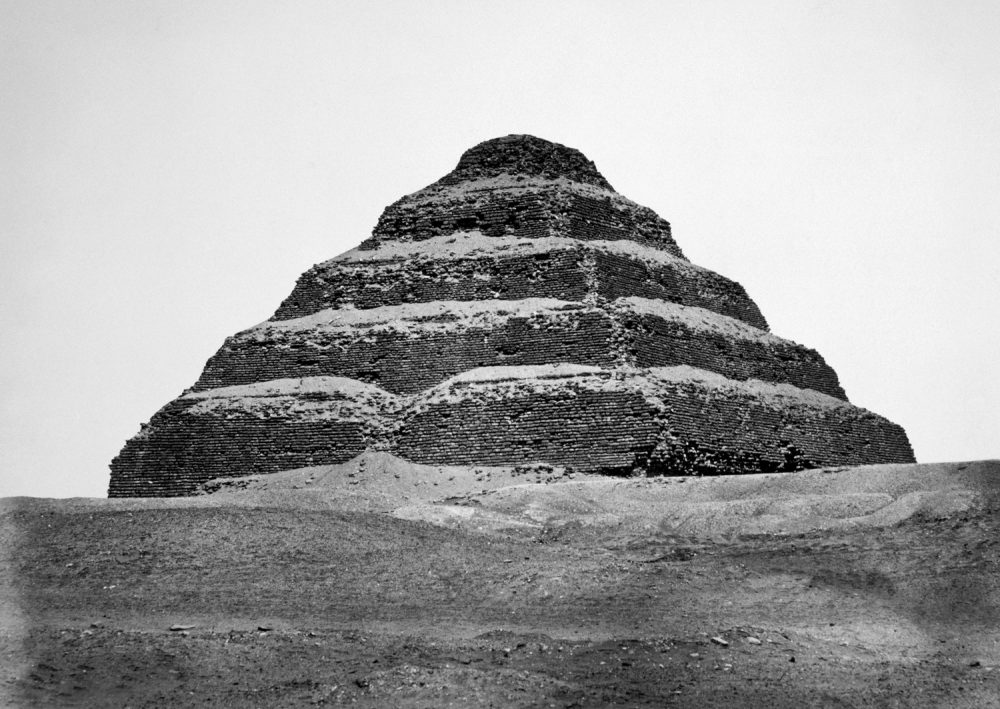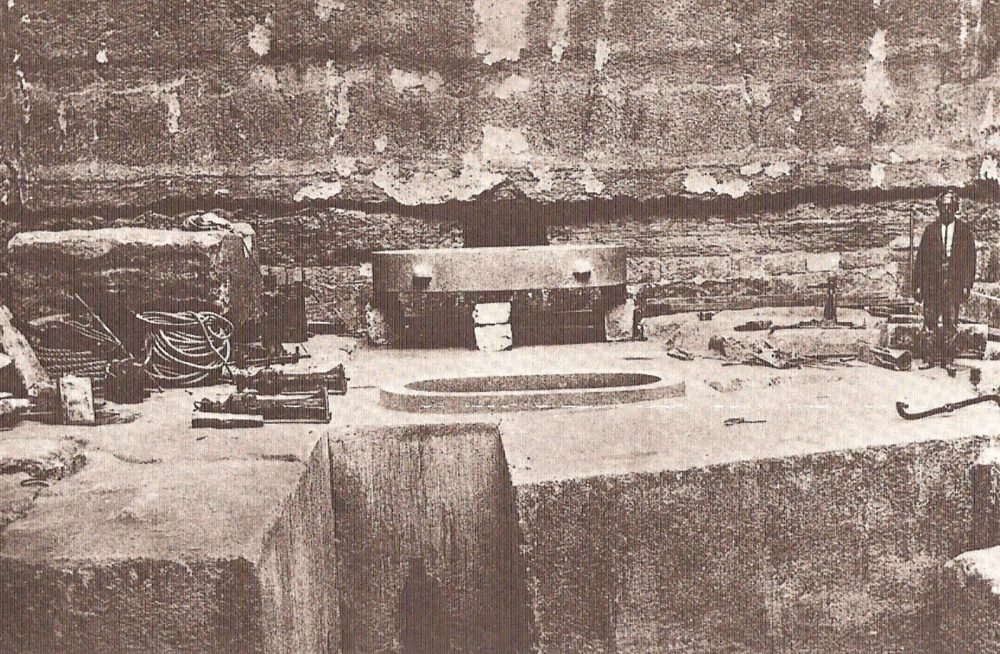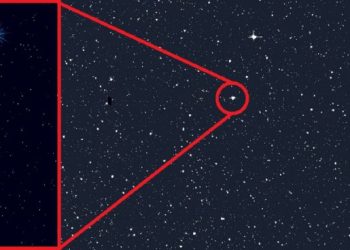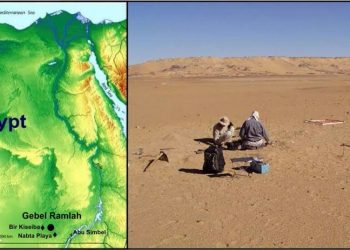Mainstream experts tell us that all pyramids, at least those in Egypt, were tombs. But what if I told you that there is a 4,600-year-old pyramid that is proof that not all pyramids were tombs? Several decades before the Ancient Egyptians kick-started the largest construction process in their history, a Pharaoh of the third dynasty built pyramids in Upper Egypt. During the Old Kingdom, the small step pyramid at South Edfu was built but did not follow traditions set forth by Pharaoh Djoser.
4,600-Year-Old Pyramid is Proof That Not All Pyramids Were Tombs
The 4,600-year-old pyramid is one of seven structures that date back to the Old Kingdom, situated outside the royal cemeteries.
Archeological missions have revealed identical smaller pyramids near several provincial centers in ancient Egypt, such as Elephantine, Abydos, Hierakonpolis, Naqada, Zawiet el-Meitin near Minya, and Seila in the Fayum.
But if you thought that these structures were just ordinary pyramids, just like all other pyramids in Egypt, you are wrong. The Pyramidomania in Egypt started around 2,700 BC when the builders of ancient Egypt evolved mastabas and redesigned how the tombs looked. It was a process that lasted several hundred years, during which the builders revolutionized their building techniques and skills.
Eventually, massive stone buildings began to be built as ancient Egypt grew economically, socially, and religiously. The prosperity of the land of the Pharaohs saw numerous changes, and the ancient Egyptian civilization introduced different improvements into their society.
But before the pyramidomania that took over ancient Egypt came Djoser, pharaoh of the 3rd dynasty during the Old Kingdom and the founder of this epoch. Though to have ruled for either 19 or 28 years, the step pyramid at Saqqara is attributed to him.
The 6-tier, 4-sided pyramid is ancient Egypt’s earliest colossal stone building. The “proto-pyramid,” as it is usually referred to, was ancient Egypt’s earliest large-scale cut stone construction. It was an architectural revolution, and Egypt was testing its capabilities as a stone-building civilization. Previous generations did not even dream of something similar. Still, Pharaoh Djoser made it possible with his royal vizier and architect Imhotep, a man deified in later Egyptian history.
Both Imhotep and Djoser changed Egypt’s construction techniques. They introduced a new, more durable type of building that would continue to be built in Egypt for more than 1700 years. The Pharaoh would live long enough to see is master plan come to life.
The pyramid that Djoser commissioned would eventually dominate the entire landscape of Saqqara. It marks an important period in ancient Egyptian history as it signalizes the departure from previous architecture and introduces new forms of building, setting along the way several important precedents, most important o which is the pyramid’s status as the first monumental structure made of stone, on the land of ancient Egypt.

But the pyramid itself was not as grandiose perhaps as the implications such a large project had. The construction process was a far greater labor-intensive project than any previous monuments built of mudbricks.
It was a glorious time that saw Egypt construct some of the most impressive and mysterious structures on the surface of the planet. It was a pyramidomania that gave birth to structures that would defy history and human reasoning. The structures raised thousands of years ago would wake in the human mind a feeling unseen before. Eventually, pyramids became the trademark logo for ancient civilizations around the globe.
Not only did the ancient Egyptians build pyramids, but cultures all across the globe constructed massive pyramids that would stand the test of time and remind us today that we are missing a massive piece in a global puzzle of ancient civilizations.
Following the construction of the Step pyramid in Saqqara and King Djoser’s reign, the ancient Egyptians did not revert to building mastabas. Instead, the Pharaohs that succeeded Djoser attempted to build their own pyramids.
Pharaoh Sekhemkhet, either Djoser’s eldest son or brother, succeeded Djoser and built the “Buried Pyramid,” an unfinished step pyramid. The Pyramid of Sekhemkhet is thought to have been modeled after Djoser’s step pyramid and is located a few hundred meters to the southwest.
The Pyramid was supposedly intended to surpass the Pyramid of Djoser in terms of height and total volume. Still, the construction phase barely made it above the ground, with only one step being finished, which is why the pyramid is dubbed the “Buried Pyramid.”
Nebka took the throne after Sekhemkhet and is believed to have commissioned the so-called Unfinished Northern Pyramid of Zawyet El Aryan. Although debated, some Egyptologists argue that the name of Nebka is inscribed in the unfinished pyramid, meaning that Nebka most likely commissioned the pyramid. The pyramid was never finished, and Egyptologists argue it may have been an attempt to build a true pyramid.
After Nebka, Teti took the throne of Ancient Egypt and commissioned the Layer Pyramid, a ruined step pyramid similar in design to the buried pyramid of pharaoh Sekhemkhet.

The idea of a pyramid
But neither Sekhemkhet, Nebka, nor Teti managed to build a pyramid. There is no evidence that either the pyramid of Sekhemkhet, Nebka, or Teti was intended as tombs. This would mean that all three attempted pyramids drew away from Pharaoh Djoser’s idea of a pyramid as a tomb.
Then came Pharaoh Huni to the throne, and things changed drastically. He was the last pharaoh of ancient Egypt’s third dynasty reigning over Egypt for 24 years until 2,600 BC. Pharaoh Huni is credited with building successful pyramids in Egypt after numerous previous failed attempts by his predecessors.
And the pyramid of Edfu is the most interesting one, and it tells us a lot about the meaning of pyramids during the Third Dynasty of Egypt. Just as the pyramids of Huni’s ancestors were not pyramids–perhaps except for the Step Pyramid of Djoser–neither was the pyramid of Edfu intended to serve as one.
The pyramid at Edfu, which was discovered in 1894 is located 800 kilometers south of the Giza pyramids and is one of seven nearly identical pyramids built at nearly the same time in early provincial centers in upper Egypt, including Elephantine, Abydos, Hierakonpolis, Naqada, Zawiet el-Meitin near Minya, and Seila in the Fayum.
The importance
All seven of these pyramids ignore the previous attempts made by Pharaohs that succeeded Djoser and draw their design directly from Djoser’s Step Pyramid. Evidence of that is the stepped shape of the pyramids. But the pyramid of Edfu has one important difference: it was never a tomb, while Djoser’s pyramid is generally acknowledged as one. Like other provincial pyramids, the Pyramid of Edfu was discovered to lack a burial chamber.
The pyramid was studied in detail in 2009 when scientists from the University of Chicago analyzed the structure. Led by Dr. Gregory Marouard from the University of Chicago’s Oriental Institute and Dr. Hratch Papazian from the University of Copenhagen, scientists found that the pyramid at Edfu was built directly on sandstone bedrock was built exclusively of sandstone and some calcareous sandstone blocks. The quarry of the stones used in the pyramid’s construction was located around 800 meters from the original construction site.
Near the pyramid, archeologists have discovered the stone foundations of what is believed to have been a small shrine or offering chapel, which suggests the monument was most likely used for the royal cult of the Pharaoh. But the most important thing is that archeological excavations have yielded no evidence whatsoever that suggests the provincial pyramids were used as tombs.
And if there isn’t any evidence that the pyramids following Djoser’s reign, all the way to Huni, were used as tombs, how much do we know about the purpose of the first pyramid in Egypt, Djoser’s Step Pyramid?
Is it possible that the Step Pyramid was built as the Pharaoh’s tomb, and the next four attempted pyramids were not used as tombs? Not only that, but the pyramids constructed by Huni, like the pyramid of Edfu, were also not a tomb, nor were the six remaining provincial pyramids.
Join the discussion and participate in awesome giveaways in our mobile Telegram group. Join Curiosmos on Telegram Today. t.me/Curiosmos











